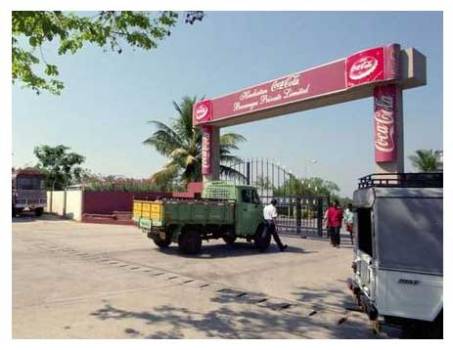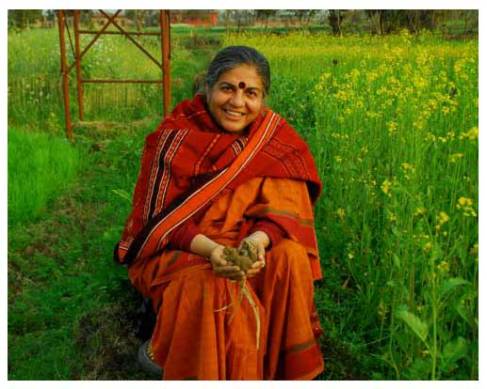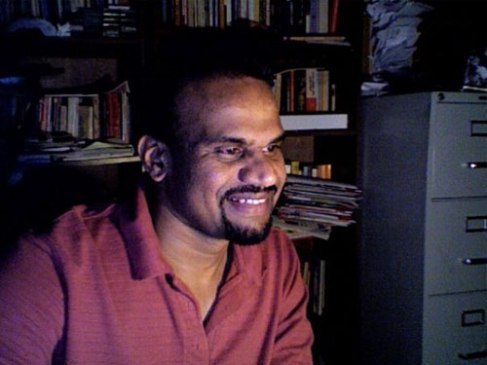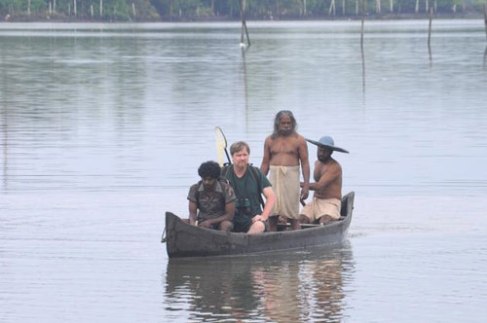(Published on March 27, 2013: http://www.madhyamam.com/en/node/10452)
Kerala is a small state on the south-western tip of India. The land is endowed with abundant water resources. There are 44 rivers in the State. These water bodies are the wonderful gifts of nature to the God’s Own Country, a slogan is being used for its unparalleled beauty. Most of the people depend on wells for drinking water. The water is part of the day-to-day life. But, the State is now reeling under a severe water crisis with fast-depleting ground water and drying water bodies.
In an exclusive interview to Madhyamam English, Indian environmental activist and anti-globalization author Vandana Shiva talks about the root cause of the current water crisis in Kerala, impact of globalization, government policies in environmental protection and the solution for it. Excerpts from her talk,
The UN has declared 2013 as the United Nations International Year of Water. What do you think about the significance of the theme?
UN themes are meant for Governments and citizen’s to focus on the issue. Movements will give meaning to this year’s theme.
There are 44 rivers in Kerala. In contrast to it, the State has been declared as a drought-affected area after successive monsoon failures during the current year. What do you think the root cause of the current water crisis?
The root cause of the water crisis in water rich Kerala is deforestation in the catchment, land grab, and sand grab from the river beds.
You said: “When we think of wars in our times, our minds turn to Iraq and Afghanistan. But the bigger war is the ongoing war against the Earth. This war has its roots in an economy which fails to respect ecological and ethical limits.” Tell us more about this war.
The war against the Earth is everywhere – in Kudankulam, in Jaitapur, in the area being grabbed by POSCO, in the tribal areas where coal, iron ore and bauxite are being mined, in the atmosphere where pollution is destabilising climate patterns, in my beautiful Uttarakhand where the madness of building is killing the Ganga and her tributaries, in the cotton belt where BT cotton has destroyed native biodiversity and killed farmers through trapping them in debt…..and one can go on and on
Plachimada in Kerala is today synonymous with the struggle for water. “Big corporate companies are transforming the planet into a supermarket in which everything is for sale.” Can you explain this?
Globalisation is justified for growth. For this, nature’s gifts and people’s commons are transformed into commodities…seed, food and water. Everything is a marketable commodity, everything is for sale. That is why the High Court ruling that water in Plachimada is a commons and belongs to the community is so significant.
What do you think about the government policies in environmental protection?
The only policy Government is making is to undermine environmental policies. The proposal to have no laws for big investments, or the attempt to introduce the Biotechnology Authority Act of India (BRAI) is examples of this deregulation.
There have been disputes between Kerala and Tamil Nadu over the Mullaperiyar dam issue. What do you think about the politics of water in India? Is it good or bad?
The politics of water is creating water wars when we should be creating water peace. And there are only two ways to reduce water conflicts-reduce water use, and strengthen people’s participation in water use decisions.
Hydro electric power plants are the major source of electricity generation in Kerala. So, the power sector in now in crisis due to the depletion of water level in dams. You know very well about the environment of Kerala. How do you see this? What do you think about the alternative power sources in Kerala?
There are alternative natural resources in Kerala. The State can explore the natural resources like biogas, solar and winds for the power generation.
Can you briefly introduce us about the Navadanya, its aims and achievements?
I started Navdanya 26 years ago to resist Patents on Seed and GMOs by saving our seeds, and defending our seed sovereignty (Bija Swaraj). We have set up more than 110 community Seed Banks, helped hundreds of thousands of farmers to shift to chemical free, ecological agriculture. Navdanya also defends Jal Swaraj, Bhu Swaraj, Anna Swaraj, Van Swaraj. Our philosophy is based on Earth Democracy.
Can you give a brief explanation of eco feminism and its relevance in today’s world?
Eco-feminism is based on the recognition that capitalist patriarchy has unleashed violence against nature and women, and that the liberation of women is intimately linked to the liberation of all life on Earth.
Are you hopeful as you look towards the future? Can you suggest the ways to go out from this environmental crisis in Kerala? What can the common people do to protect the environment?
If I looked to the future passively, I would be despondent and hopeless. But every day I work to cultivate hope. We have to be the change we want to see. We have to create alternatives and we have to resist destruction, both as our right, and as our ecological duty.























